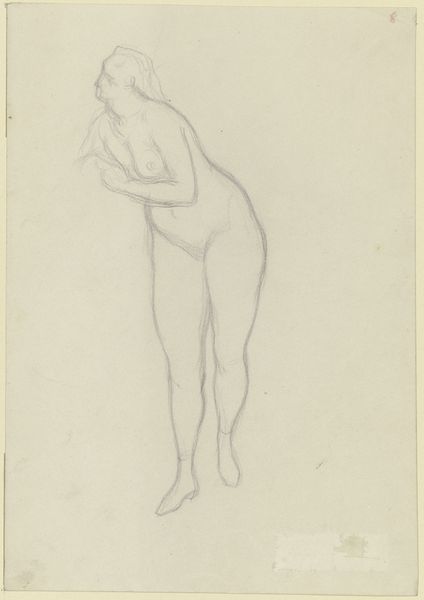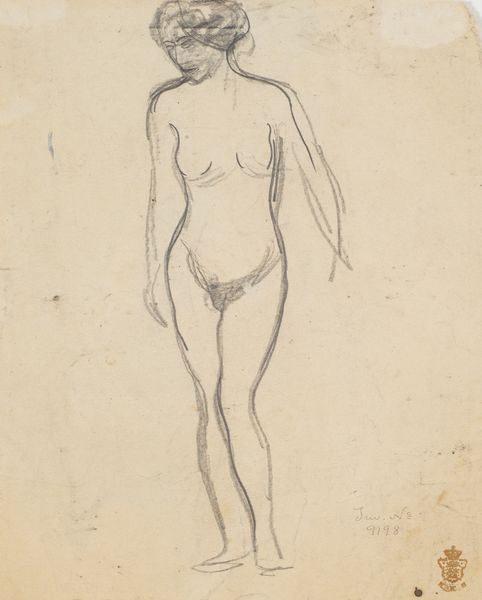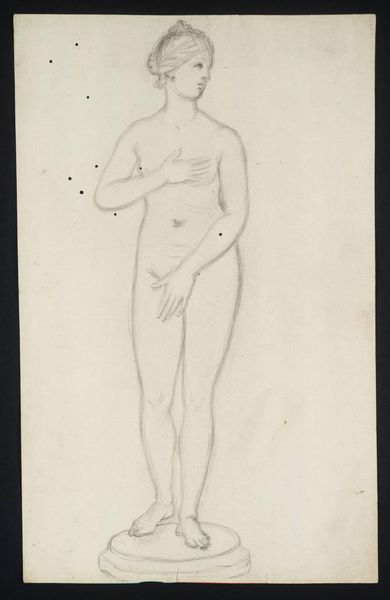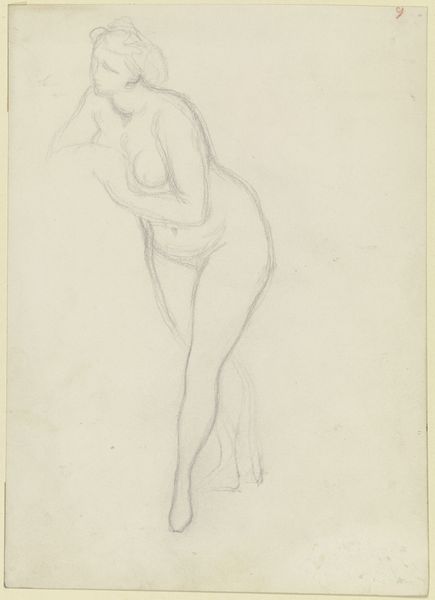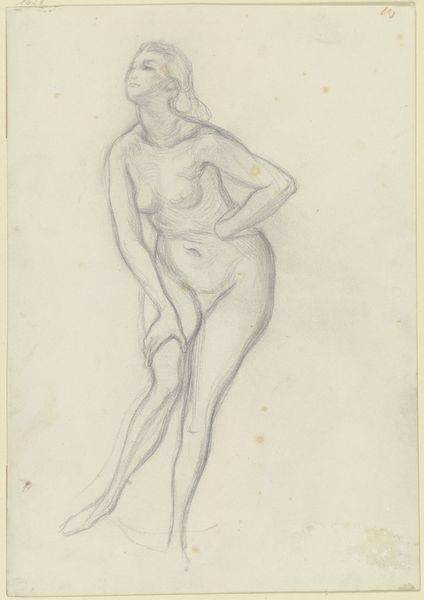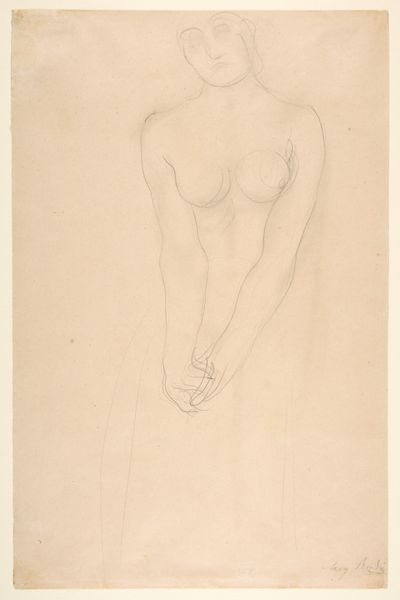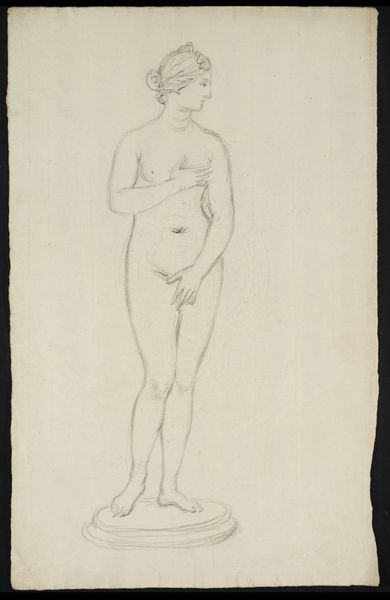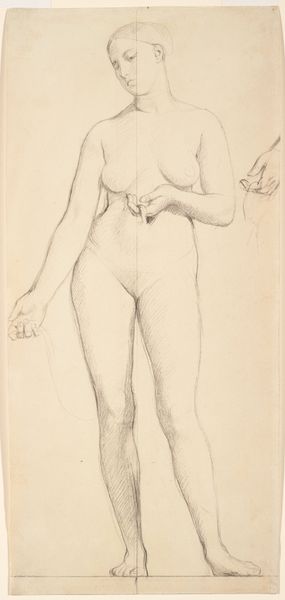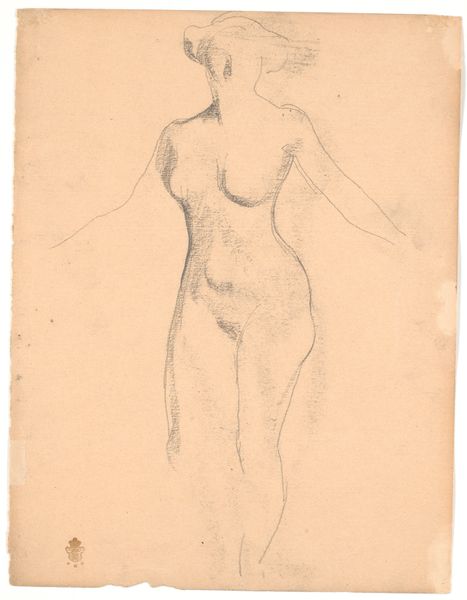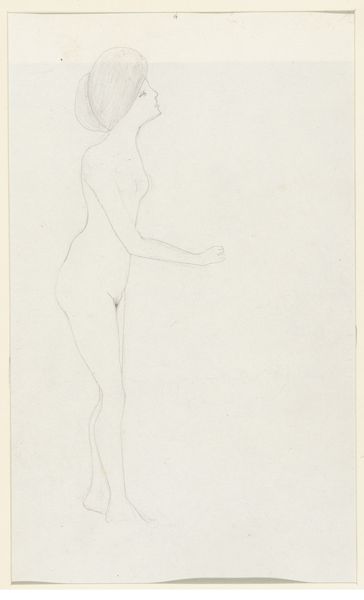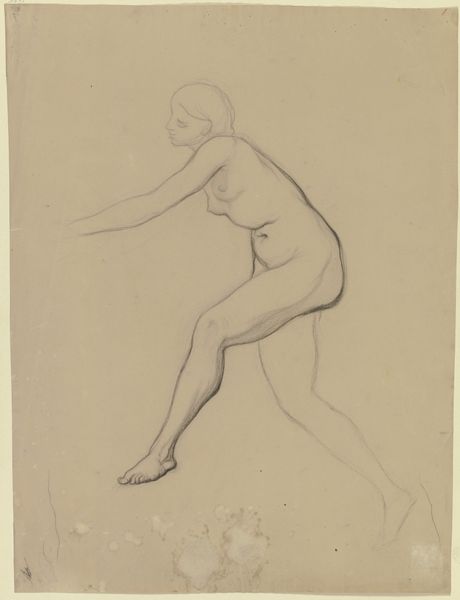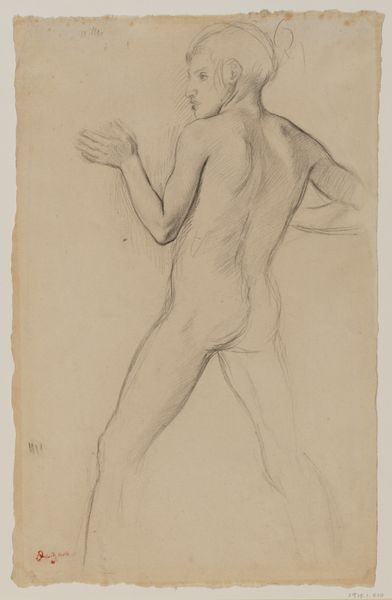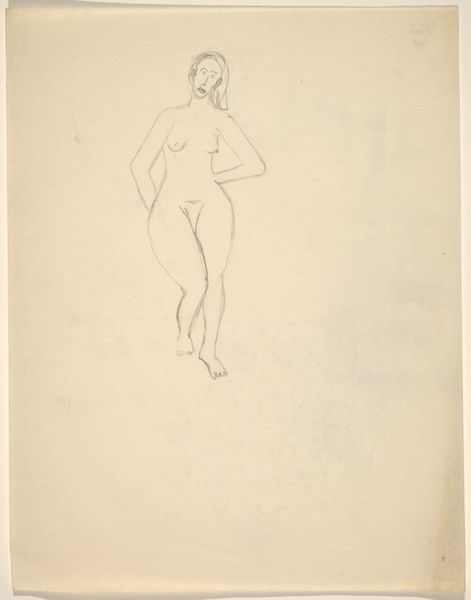
drawing, pencil
#
drawing
#
figuration
#
pencil
#
academic-art
#
nude
#
realism
Dimensions: overall: 45 x 29 cm (17 11/16 x 11 7/16 in.)
Copyright: National Gallery of Art: CC0 1.0
Curator: This pencil drawing, "Study of a Female Nude," created by Edgar Degas between 1856 and 1858, presents an intriguing image of the human form in development. What is your first impression? Editor: Well, it's surprisingly tender, even with the academic underpinnings. It feels vulnerable, maybe because her face is absent, or maybe because it's clearly a study. The pale pencil strokes feel like hesitant caresses. Curator: I'm drawn to the process, too. Degas wasn't just depicting a nude, but also grappling with form, light, and shadow through his chosen materials. Pencil allows for adjustments, a back-and-forth. We can see he also studied some fragmented limbs too, in separate sketches around the main study. Editor: True! It’s like witnessing a quiet, almost private, act of creation, very intimate. Curator: Absolutely. He's dissecting, understanding the mechanics of the body, perhaps referencing the tradition of academic study, and questioning the very means of representation itself through a material lens. Editor: But without the usual artistic bravado or bombast! She’s just...there. And I'm wondering who she was, what the encounter with Degas felt like. I bet the studio felt quite cold! Curator: That question of the lived experience is crucial! Consider the power dynamics at play between the artist and model, particularly within the constraints of 19th-century art academies. Degas challenges conventional notions of the “ideal” female form while reproducing the dynamic nonetheless. Editor: A dynamic we are also participating in by witnessing this intimate moment in the creative process. Curator: Precisely. Through pencil on paper, labor, representation, and social relations intersect in one layered image. Editor: Makes you appreciate the journey behind the art, doesn't it? All that history etched into a seemingly simple sketch. Curator: It certainly deepens one's appreciation for both the artwork and its context.
Comments
No comments
Be the first to comment and join the conversation on the ultimate creative platform.
